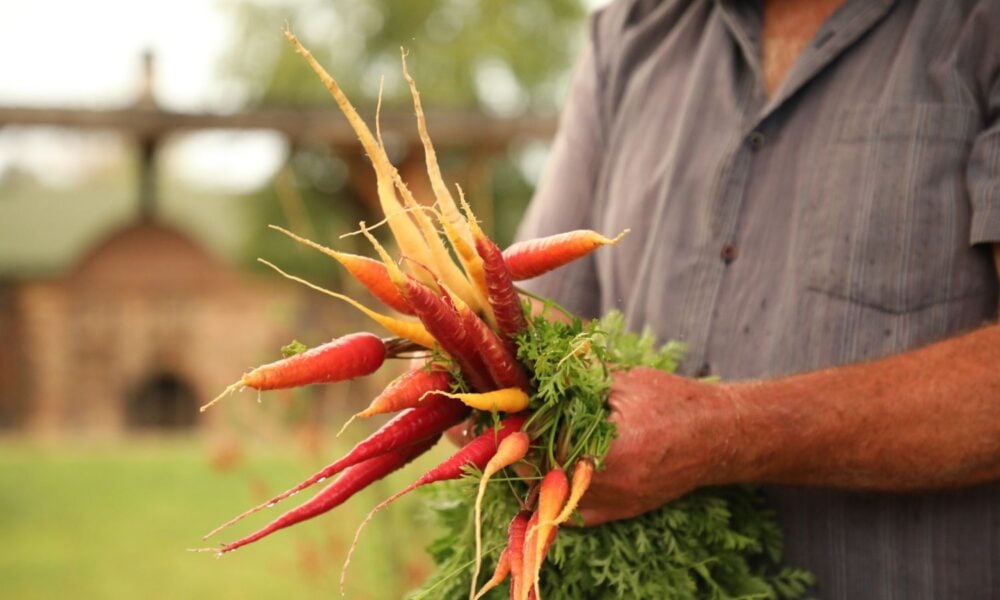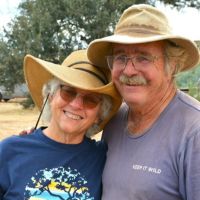Recent stories in the New York Times’ groundwater investigation series have highlighted growing concern for the global loss of groundwater, which has finally begun to raise awareness of the need for critical changes in how we are using our groundwater. This need is particularly evident in the Cuyama Valley of northeastern Santa Barbara County in California, where my family’s small vineyard and olive grove is located.
My partner in our farm, Robbie Jaffe, and I have been very involved in trying to speak for the Cuyama Valley community, defending the science of groundwater depletion and our personal experience as farmers and community-members. I am a professional agroecologist trained in ecosystem processes with experience in sustainable agriculture. Robbie is an environmental educator and community organizer with long experience in food justice issues. Recently, Robbie and I joined with allies to launch an effort to take this message directly to consumers, who have an important role to play.
Cuyama Valley is our home—and ground zero for groundwater depletion
The Cuyama Valley is dry, almost desert-like, and small farms like ours rely on the sustainable use of groundwater. Historically in California, unlimited groundwater pumping has been the norm. Over many years, as Big Agriculture in the state got bigger and bigger, such unbridled pumping led to a race to the bottom for too many aquifers, and drought and climate change only intensified the need to pump. In 2014, the California legislature passed into law the Sustainable Groundwater Management Act (SGMA), and for the first time, groundwater basins in the state would need to start cutting back on over-drafting our shared groundwater resource.
With SGMA, local agencies, called Groundwater Sustainability Agencies (GSAs), have been charged with developing Groundwater Sustainability Plans (GSPs) to stop groundwater overdraft. What is novel about SGMA is that it does not challenge actual water rights but puts restrictions on how much water rights-holders can pump depending on the level of overdraft. Too often, however, the agencies are dominated by the same water users who caused the overdraft in the first place, so plans are heavily weighted in their favor, and the law gives until 2040 to bring basins into balance.
This is definitely the case in the Cuyama Valley. Classified as one of the 21 most critically overdrafted basins in the State, the Cuyama GSA submitted its GSP at the end of 2020 to the California Department of Water Resources (DWR). The plan was rejected and returned to the GSA for corrections. In early 2022, a revised plan was submitted, which DWR approved with a few recommendations for future corrections. Pumping reductions of 5% of current pumping finally started in 2023 in the most severely impacted parts of the Valley. In 2025, the reduction is slated to be increased to 6.5%. Based on the water models developed by the GSA, this means that our groundwater account will finally be balanced in the year 2038, in other words, “water in” will equal “water out” at that point.
But in the meantime, overdraft continues, and sustainability is defined solely as being achieved at this end point. To bring our groundwater into balance now, pumping in the main basin would need to be reduced by 60%. There are other indicators of the health of the groundwater system, such as water levels in wells, water quality, land subsidence, and impacts on shallow rooted ecosystems such as those dominated by willows and cottonwood trees. But there is concern that by the time these indicators can play a role in reducing pumping, it will be too late for recovery. Restoration is not part of the GSP—just pumping reductions.
We can farm with less water
On Robbie and my farm, we produce wine grapes and olives using traditional water-conserving dry-farm practices, where in most rainfall years we don’t irrigate our plants at all.
Dry farming is an old Mediterranean system that captures rainfall in the soil when it occurs in the winter and conserves it there for the plants to use during the rainless summer. I feature dry farming in a chapter of my textbook of Agroecology that I used in my teaching at the University of California at Santa Cruz, for over 30 years. Our farm is our personal example of how to do agroecology.
It would seem reasonable that the part of the Valley that is most severely over-pumped would be the place to focus most of the cutbacks on pumping. But this is also the part of the Valley where the two most powerful non-resident corporate agriculture companies have been so intensely pumping for decades. These two corporations are Grimmway Farms and Bolthouse Farms—the two biggest carrot growers in the world. They both continue to pump as much as they can to keep their carrot operations producing the pseudo-baby carrots ground down from normal mature carrots. Most of the smaller farms, especially those belonging to families that have been in the Valley for a long time, have already begun to change their farming practices in order to reduce water use. But Big Carrot keeps pumping.
Big Carrot ignores science and community advocacy
Robbie has served on the Stakeholders Advisory Committee (SAC) that provides local community feedback to the GSA on the development and implementation of the GSP. Being made up primarily of community members who live in and love the Valley, the SAC has questioned many of the elements of the GSP, and pointed out how and why the plan needs to be improved. But the GSA has been dominated by the big growers and their hired consultants. Too often, our viewpoints were ignored as we are only advisory, and hence have no real decision-making power.
However, after the 2022 version of the GSP was approved with conditions by DWR, the two corporate carrot behemoths decided they didn’t like the plan after all. They filed a lawsuit in the Los Angeles Superior Court challenging the water rights of every landowner in the Valley, big and small, in what is called an adjudication. The two corporate giants claim that the GSP unfairly targeted them, even though almost 70% of all the water pumped in the Valley every year is pumped by them. They insist that everyone in the Valley must reduce their groundwater use more so that the two companies can cut back less.
The worst part is that every landowner has had to contract lawyers to defend each of their own water rights, otherwise risk losing them completely. Most of the landowners in the Valley, many of them multi-generation residents, are what are called de-minimis water users, meaning they pump less than two acre-feet of water from their wells over a year. Most of that water is for domestic use since most are not even farming. And some of the small farmers, like us, are de-minimis as well thanks to the water conserving farming practices we use. Most of us don’t have the financial resources to defend ourselves, and fear we have no choice but to give up our water rights.
It takes a community to make change happen
In a Valley where so many of the folks who live here are considered politically conservative, the fact that two large corporate farming operations owned primarily by hedge funds has ignited a prairie fire of anger and their resentment is actually encouraging. Water in the Cuyama Valley has become a social justice issue, and the community has united around a carrot boycott to call attention to the injustice taking place in our Valley.
The power of the grassroots is manifesting itself in the boycott. This small Valley with less than 2,500 total residents is reaching out and letting the world know that this injustice has to stop. If it can be stopped here, there is hope it can be stopped elsewhere. Cuyama is an example of what is happening elsewhere. But fighting such large corporate interests is not easy. They recently withdrew their brand names from the lawsuit, yet the case continues behind the names of other entities that are probably just shell corporations controlled by Grimmway or Bolthouse family members.
To see what this boycott is trying to do, please visit www.standwithcuyama.com, view the 3-minute video, and sign their petition. Join the boycott of the carrots of these two corporations. Instead of buying from Grimmway and Bolthouse, get your carrots locally from farmer’s markets or farm stands (find one near you), or grow your own. Small voices can come together and make a big noise for change.

